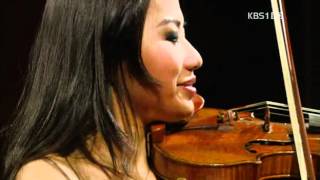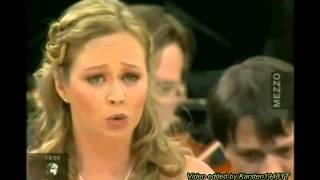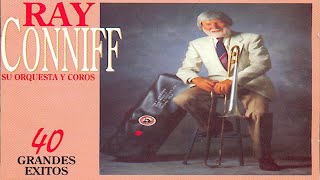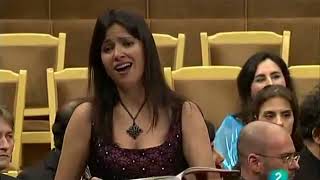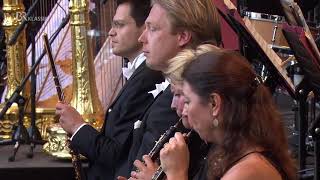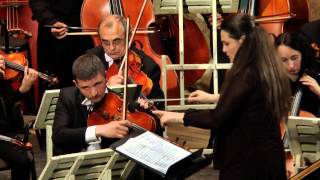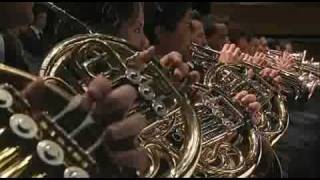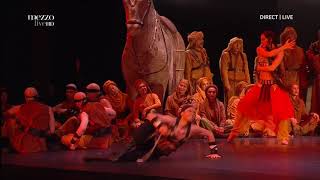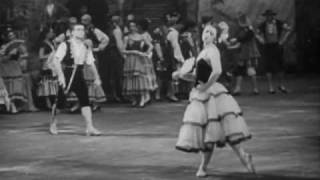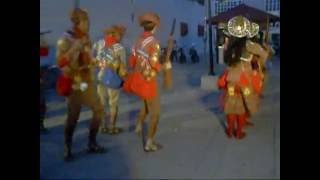Recommended music videos for initiation to classical music
Josquin des Prés (1450-1521) or Josquin Després was a Franco-Flemish composer of the Renaissance , considered the most famous European Renaissance composer along with Guillaume Dufay, Tomás Luis de Victoria and Giovanni Pierluigi da Palestrina . He is commonly regarded as the central figure of the Franco-Flemish school and widely regarded as the first master of the High Renaissance style of polyphonic vocal music. During the 16th century he gained fame as the greatest composer of the age, whose masterful technique and expression were universally imitated and admired. At least 374 works are attributed to him; both sacred and secular music and in all the significant vocal forms of the time, including masses, motets, chansons and frottole.
The madrigal is a composition for three to six voices on a secular text, often in Italian. It had its peak in the Renaissance and early Baroque . Musically, it recognizes its origins in the frottola , it has lyrics in Italian with a profane theme, contrapuntal harmony, and a popular character; composed mostly for a cappella voices, and in some cases with instruments doubling the vocal parts. The madrigal was the most important secular musical form of its time. It flourished especially in the second half of the 16th century , losing its importance around the third decade of the 17th century , when it faded through the growth of new secular forms such as opera, and mixed with cantata and dialogue.
Edward Elgar (1857- 1934) English composer born near Worcester . At the age of eight, he began his violin and piano studies. At the age of 22 he was appointed gang manager at Powick Asylum ; he was part of the orchestra of the Worcester and Birmingham Festivals, coming to interpret Symphony No. 6 and Dvorak 's Stabat Mater conducted by the same composer. Faced with the difficulty of making himself known in London , he returned to Worcester to direct the local bands and teach music classes. At the age of 42, he wrote the Enigma Variations that catapulted him as the most important British composer of his time. In 1904 he was knighted at Buckingham Palace ; from then on he received important recognitions and awards.
Salut d'Amour , Op. 12, is a musical work composed by Edward Elgar in 1888, originally for violin and piano. Elgar completed the piece in 1888, as an engagement present, when he was engaged to be married to Caroline Alice Roberts and named the work " Liebesgruss " ("Love's Greeting") because of Alice 's fluency with German. It was published by Schott & Co. a year later and few copies were sold until the publisher changed the title to Salut d'Amour , leaving " Liebesgruss " as a subtitle. The first public performance of the work was in its orchestral version, and took place at a concert at The Crystal Palace on November 11, 1889, conducted by August Manns .
Today it is offered to us in its original version for violin and piano by the American violinist, of Korean descent, Sarah Chang accompanied on piano by pianist Andrew von Oeyen.
Edvard Grieg (1843-1907) was a Norwegian composer and pianist, considered one of the main representatives of musical romanticism. His mother, Gesine , was his first piano teacher; Later, in the summer of 1858, Grieg met the legendary Norwegian violinist Ole Bull , a family friend and his mother's brother-in-law. Grieg adapted many themes and songs from his country's folklore, thus helping to create a Norwegian national identity, much like Jean Sibelius did in Finland or Antonín Dvořák in Bohemia . His most important works are: the Piano Concerto in A minor , the intimate Lyrical Pieces (for piano), the Holberg Suite (for string orchestra) and, especially, Peer Gynt, incidental music that he wrote on behalf of the writer Henrik Ibsen for his eponymous drama.
Peer Gynt , op 23, is a musical composition for stage design, or incidental music, for reciters, vocal soloists, choir, and orchestra by Grieg ; although the two suites that the author himself wrote have become more famous among the general public, Suite No. 1 op. 46 and no. 2 op. 55, for the play Peer Gynt by the Norwegian playwright Henrik Ibsen .
From this incidental work, today we witness the famous Solveig Song performed by the Norwegian soprano Marita Solberg (1976), a singer who has worked with Marc Minkowski, Zubin Mehta, Michel Plasson and other great conductors. From 2006 to 2008 she was the lead singer at the Staatsoper, Stuttgart . He has also performed at the Gran Teatre del Liceu in Barcelona, Teatro Real in Madrid, Komische Oper in Berlin and at the Norwegian National Opera .
Joseph Raymond Conniff (1916-2002), better known as Ray Conniff , was a prominent American musician, bandleader, vocal and instrumental arranger, and trombonist characterized for employing a choir to accompany the orchestra he formed. His love for Latin American music led him to include great classics considered icons such as: "Bésame mucho", "La Bamba", "El día que me quieras", "Frenesí", "Aquellos ojos verdes", "Perfidia", "Brasil ", "La Múcura", "Tico Tico, "El cóndor pasa" and "Caballo viejo", among many others. For this reason, Conniff became very famous in Latin American countries, thanks, in addition, to his constant participation in the Festival International de la Canción de Viña del Mar. He also recorded several hits by the famous singer-songwriter Camilo Sesto in the 1980s.
Recommended classical music videos
Georg Friedrich Handel ( 1685-1759) born in Halle , Germany , is one of the leading figures in the History of Music and, of course, of the Baroque . He wrote numerous operas, cantatas and oratorios, among which we must highlight his masterpiece, the Oratorio El Mesías . At the age of 18 he moved to Hamburg where he joined the orchestra of the Opera. After three years he traveled to Florence , and then to Rome . In 1710 he returned to Germany and from there to London where he achieved great success, which encouraged him to settle under the tutelage of different patrons. Although he was always very jealous of his private life, there are innumerable indications that make us assume his homosexual inclination. In London he acquired his British nationality and was appointed manager of the Opera House until his death in 1759.
The Oratorio is a dramatic musical genre, unlike opera , without staging, costumes, or decorations. Composed generally for solo voices, choir and symphony orchestra, sometimes with a narrator, its theme is frequently religious (stories from the Bible or the Gospel , the life of Jesus or the lives of saints, etc.), but it can also be profane (mythological heroes, historical themes, hymn to nature, etc.). Its main characteristics are generally A) A general structure in several parts, frequently three, (eventually preceded by an instrumental prelude). B) The presence of a narrator (outside the action or identified with a character). C) The alternation between the sung parts of arias and recitatives.
Judas Maccabee (HWV 63) is an oratorio in three acts composed in 1746 by Hände l based on a libretto written by Thomas Morell . The oratorio was intended as a compliment to the victorious Prince William Augustus , Duke of Cumberland on his return from the Battle of Culloden (16 April 1746). It premiered on 1 April 1747 at Covent Garden , and became one of Handel 's most popular oratorios. Today it is offered to us by tenor Gene Stenger in the role of Judas Maccabee , with the Harvard University Choir and the Harvard Baroque Chamber Orchestra under the baton of maestro Edward Elwyn Jones .
Johannes Brahms (1833-1897) born in Vienna where he spent most of his life, was the composer of the most conservative romanticism compared to the progressive current led by Liszt and Wagner . His music is firmly rooted in the compositional structures and techniques of the classical masters and its formal structures faithfully follow the patterns of classicism, although it uses some of the coloring of romanticism and popular music. Of an eminently perfectionist nature, he wrote for piano, chamber ensembles, symphony orchestra, for solo voices and for choir. It was Hans von Bulow who proposed the "three B's" referring to Bach , Beethoven and Brahms as the three main pillars of the History of music .
Concerto for piano and orchestra No. 1 was composed by Brahms in 1858 and premiered on January 22, 1859, at the Royal Theater in Hanover with the composer himself as soloist and with Joseph Joachim on the baton This work symbolizes Brahms 's effort to combine piano effects with the orchestra, unlike his predecessors, who limited the role of the latter to a mere accompaniment of the soloist. Brahms 's interest in writing particularly interesting music for horn and timpani, whose parts are remarkably difficult, is also demonstrated in this concerto.
The concert is structured in three movements: I (1´27´´) MAESTOSO. II (24´00´´) ADAGIO .-. III (36´37´´) RONDO: ALLEGRO NON TROPPO. Today performed by the Finnish pianist Paavali Jumppanen accompanied by the Helsinki Philharmonic conducted by the maestro, also Finnish, Susanna Mälkki .
George Enescu (1881-1955) was a Romanian composer, violinist, educator, pianist and conductor, considered one of the most important musicians in his country and with a career deeply linked to France . Between the years 1888-1894 he studied at the Vienna Conservatory , quickly adjusting to the musical life of the city where his concerts, in which he performed works by Brahms, Sarasate, Vieuxtemps and Mendelssohn , excited the press and the public. He was then only 12 years old. After graduation from the Vienna Conservatoire , he continued his studies at the Paris Conservatoire . In 1898 he made his debut as a composer in Paris . The same year he began conducting concerts in Bucharest and giving violin concerts.
The Two Romanian Rhapsodies , Op. 11, for orchestra by George Enescu were written in 1901 and first performed together in 1903; both employ elements of lăutărească (Romanian Gypsy) music, vivid Romanian rhythms, exotic modal colours, with some scales having 'moving' thirds, sixths or sevenths, creating a shifting major/minor atmosphere, one of the characteristics of Romanian music . The essence of Rhapsody No. 1 is dance. Enescu claimed that it was "just a few melodies put together without thinking about it", but his sketches show that he carefully worked out the order in which the melodies should appear and their instrumental configuration. It was completed on August 14, 1901, when Enescu was only 19 years old.
Today it is offered to us by the National Philharmonic of Moldova under the baton of Canadian maestro Silvia Tabor.
Silvestre Revueltas Sánchez (1899-1940) was a Mexican modernist composer of symphonic music from the first half of the 20th century , violinist and conductor. Appointed assistant director of the Mexico Symphony Orchestra by Carlos Chávez , it was difficult for him to dedicate himself to composition due to his lack of self-esteem and because of his leftist ideas he was largely cornered by Mexican society. He traveled to Spain during the Civil War as a personal support for republicanism and on his return writes Sensemayá . He is currently considered one of the most influential composers in Mexico , due to the scope and originality of his chamber music and certain works that have become a very important part of the orchestral repertoire.
Sensemayá (song to kill a snake) is a symphonic poem based on the homonymous poem by Cuban poet Nicolás Guillén (10-11-21). With Sensemayá, Revueltas managed to reach one of the highest points in his musical production, in a rhythmically complex score full of rough and direct textures. It all begins with an undulating, mysterious environment, like entering the same ritual to kill the snake. The tuba rises vigorously with the central melody in a rhythmic time of 7/8. Later on, muted trumpets and some woodwinds take up the tuba's discourse and transport it to different ranges of dynamic and rhythmic expression.
Today we can enjoy it in a version by Gustavo Dudamel (1981), a Venezuelan orchestra director. This young teacher emerged from the System of Youth and Children's Orchestras of Venezuela , where he entered at the age of four, studying violin, composition and conducting. He is currently the head of the Los Angeles Philharmonic Orchestra and the Simón Bolívar Symphony Orchestra and is considered, despite his youth, as one of the best conductors in the world.
Recommended music videos for all tastes
Esbjörn Svensson Trio (also known as EST ) was a Swedish musical group whose main style was jazz. It was founded in 1993 and consisted of frontman Esbjörn Svensson (piano), Dan Berglund (bass) and Magnus Öström (drums). EST were known for their innovative style and had great worldwide recognition, both among critics and experts as well as in sales. Despite the fact that its name refers to the name of the pianist and founder, the group defined itself as "a pop band that plays jazz". In addition, it broke with the tradition of having a leader in the band in favor of equality among its members. They performed in jazz venues, as well as in typical rock band settings, using smoke and lighting effects.
Rosario Flores (1963) is a Spanish singer, songwriter and actress of gypsy origin. She is the youngest daughter of Antonio González , "El Pescaílla", and of the mythical artist Lola Flores , "La Faraona", sister of the actress and singer Lolita Flores and of the singer-songwriter Antonio Flores , she is also the niece of the singer Carmen Flores , as well as aunt of actresses Elena Furiase and Alba Flores. She has been the winner of the Latin Grammy for the best female pop vocal album, in the 2002 and 2004 editions for her works Muchas flores and De mil colores , respectively. According to the Music Producers of Spain, it has twelve platinum records and three gold records. Throughout his career he has sold more than 2 million records. In 2020 he received the Gold Medal for Merit in Fine Arts.
Yuri (1964) is a Mexican singer, actress and television presenter. Her vocal quality and versatility allow her to interpret different musical genres, such as pop, ballad, dance, ranchera, cumbia and regional Mexican, among others. She achieved recognition from her participation in the OTI Song Festival in 1980. In 1981, with her album Llena de dulzura and her single Maldita primavera , she achieved international success in Latin America and Spain and became the first Latin American singer to win gold records in Europe . He has released more than 30 studio albums, and has sold more than 30 million copies worldwide. In 2018, the Latin Academy of Recording Arts and Sciences honored Yuri with a Grammy Award for musical excellence.
Seeed (1998) is a German Reggae band made up of three singers, eight instrumentalists and a DJ and uses a wide range of instruments in their compositions. Their influences range from reggae to rap and hip hop, encompassing various styles. In 2001 they released their first album, which was enough to become popular in the German media. In 2003 they released their second album with a version for the German public and a second version for foreign consumption. Since then he has obtained 5 gold records, has been awarded important prizes and has taken part in renowned national and international festivals.
Recommended peculiar videos
Prince Igor (Князь Игорь / Knyaz' Igor') is an opera by Alexander Borodin , inspired by Prince Igor of Kyiv 's campaign against the Polovtsy or Cumans of Khan Kontckak , according to a 12th-century epic poem, " The Tale of the Campaign from Igor ". Unfinished opera when Borodin died in 1887, it was completed by Nikolai Rimsky-Korsakov and Alexander Glazunov and premiered on 4 November 1890 at the Mariinsky Theater in Saint Petersburg . The famous Polovtsian dances, which we offer today, take place at the end of Act 2, in the Kontchak camp where Igor is being held prisoner.
Don Quixote is a ballet with a prologue and four acts by Ludwig Minkus and choreography and libretto by Marius Petipa , which would be premiered in 1869 at the Bolshoi Theater , with enormous success from both critics and the public; ballet whose plot is based on the novel by Miguel de Cervantes and in particular on the "wedding of Camacho" ( Gamache in the ballet), an episode narrated in chapter XIX of the second part, in which the romance between the barber Basilio and the young Quiteria (Kitri in the ballet).
Today we offer some fragments in interpretation of the Russian dancer Maya Plisetskaya (1925-2015) one of the greatest ballet dancers of the Bolshoi Theater and one of the indisputable symbols of classical dance, which was awarded the title of prima ballerina absolute .
Within what is the Basque Dance , the Fandango with a ternary rhythm and the Arin-Arin with a binary rhythm form the most common set of dances at festivals in the Basque Country . Both dances danced by mixed couples have a certain similarity with other similar dances of the state and with the binary pavane and the ternary gallant that were already danced in the Renaissance .
The Basque fandango has a ternary rhythm, written in 3/8 time, and presents square phrases, organized in modules of eight bars. Each step spans sixteen measures, and the musical phrases are arranged accordingly, sometimes being sixteen measures, many repeating eight measures, and almost always arranged in antecedent and consequent. Normally three different steps are danced, but in Navarra it is very common to also do a fourth .
Pisada do Sertão was born in 2004, in the small Brazilian city of Poço de José de Moura , in the interior of Paraíba , in a fragile, discredited and highly vulnerable territory, where people limited themselves to living in a life cycle marked by the poverty, exclusion, scarcity of resources and opportunities. The organization began its activities with the formation of a regional dance group made up of adolescents and young people who sought to find in dance an opportunity to give new meaning to their condition of idleness and social vulnerability. Pisada do Sertão has come to recognize culture as an instrument of inclusion and social development, and currently stands out throughout the sertanejo and northeastern scenario due to its importance for the territory in which it operates. (Text taken from the bottom of the video)
Recommended music videos for children
Various Wikipedia articles have been used to write these texts.
The texts of Videomusicalis are written in Basque, Spanish and English.






